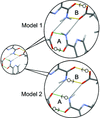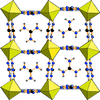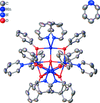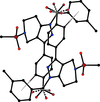issue contents
March 2017 issue
Special issue on NMR crystallography
Guest Editors: David Bryce (University of Ottawa, Canada) and Francis Taulelle (Université de Versailles Saint Quentin en Yvelines, France)

Cover illustration: The term `crystallography', in its broadest sense, refers to obtaining structural information on crystals and related solids. Diffraction-based methods continue to play an enormous role in this area of research. Nuclear magnetic resonance (NMR) spectroscopy has, however, from its earliest days, also provided structural information on both crystalline and amorphous samples. The contributions to this special issue serve as an excellent introduction to the power and scope of NMR crystallographic methods and applications.
editorial

topical reviews
nmr crystallography


 access
access



 access
accessThe ambient hydration of the aluminophosphate JDF-2 to AlPO-53(A): insights from NMR crystallography
research papers






















 journal menu
journal menu








































